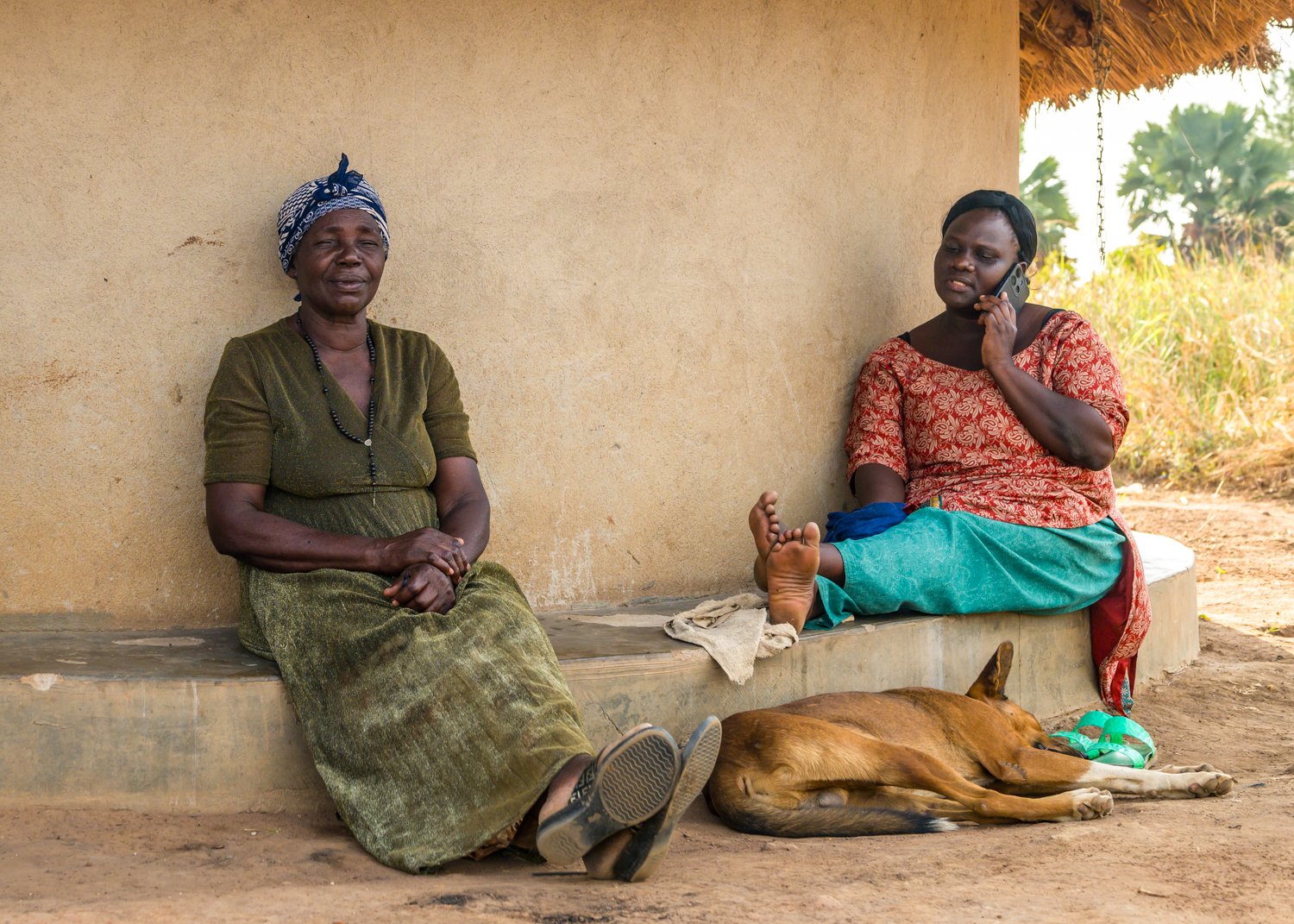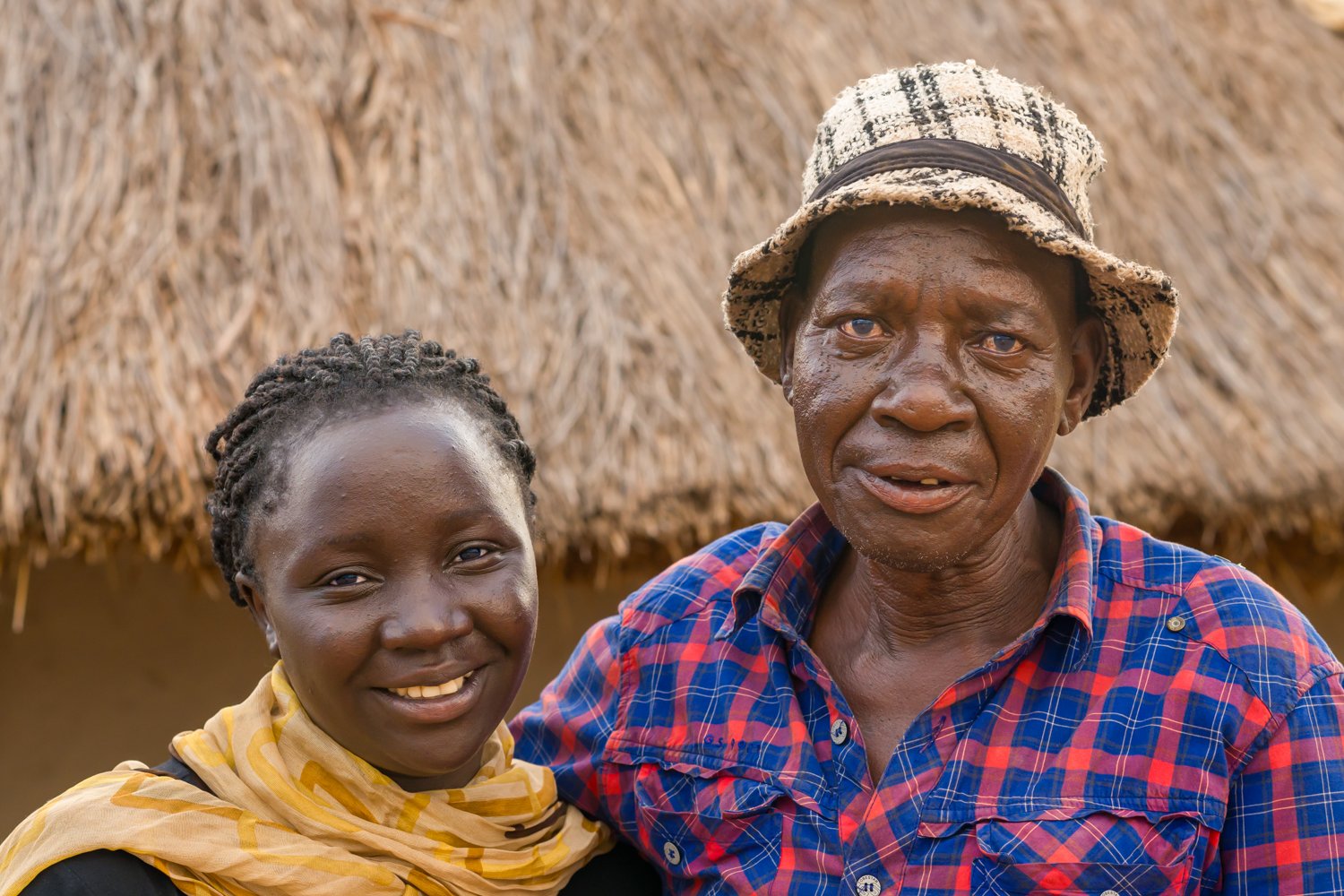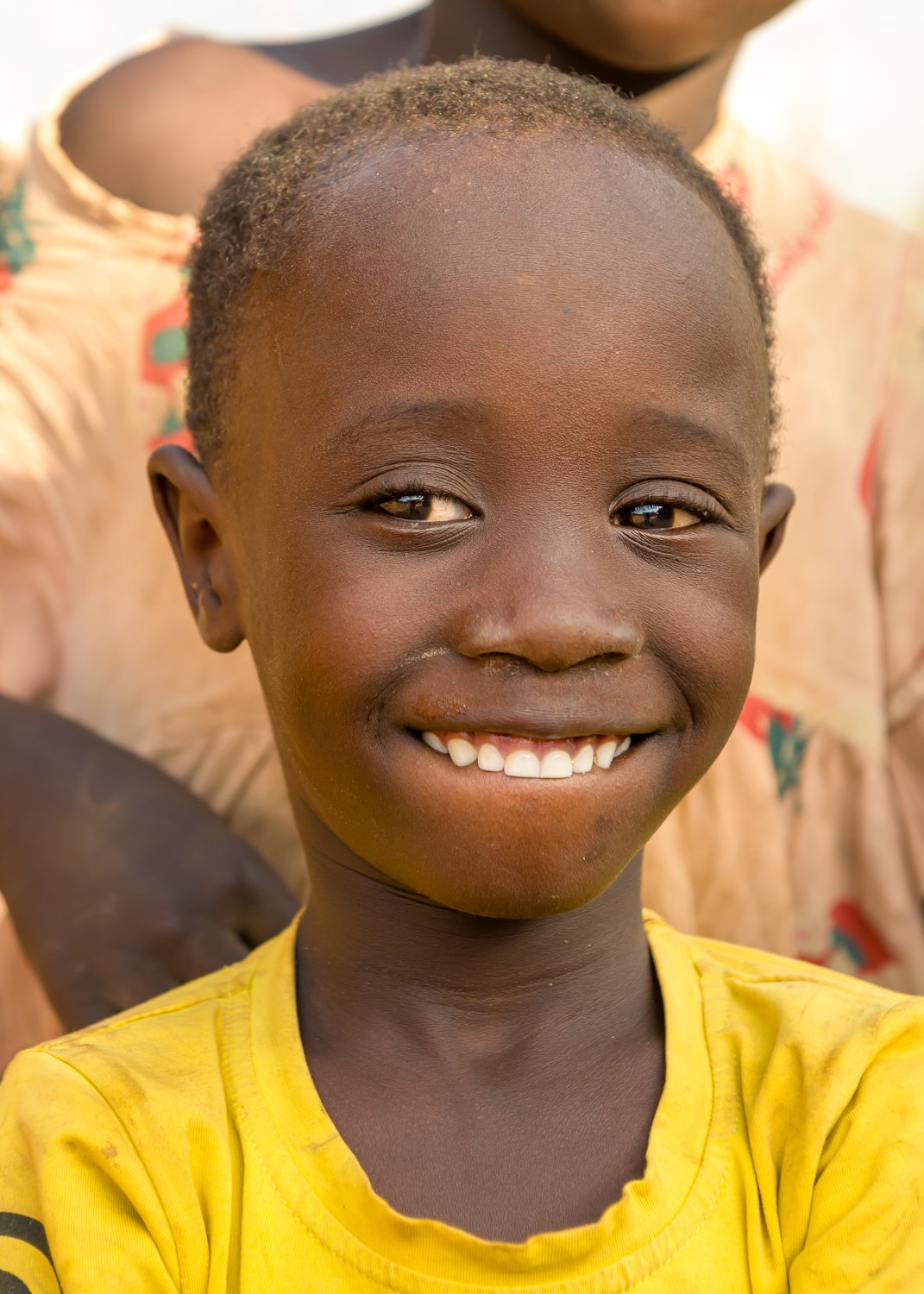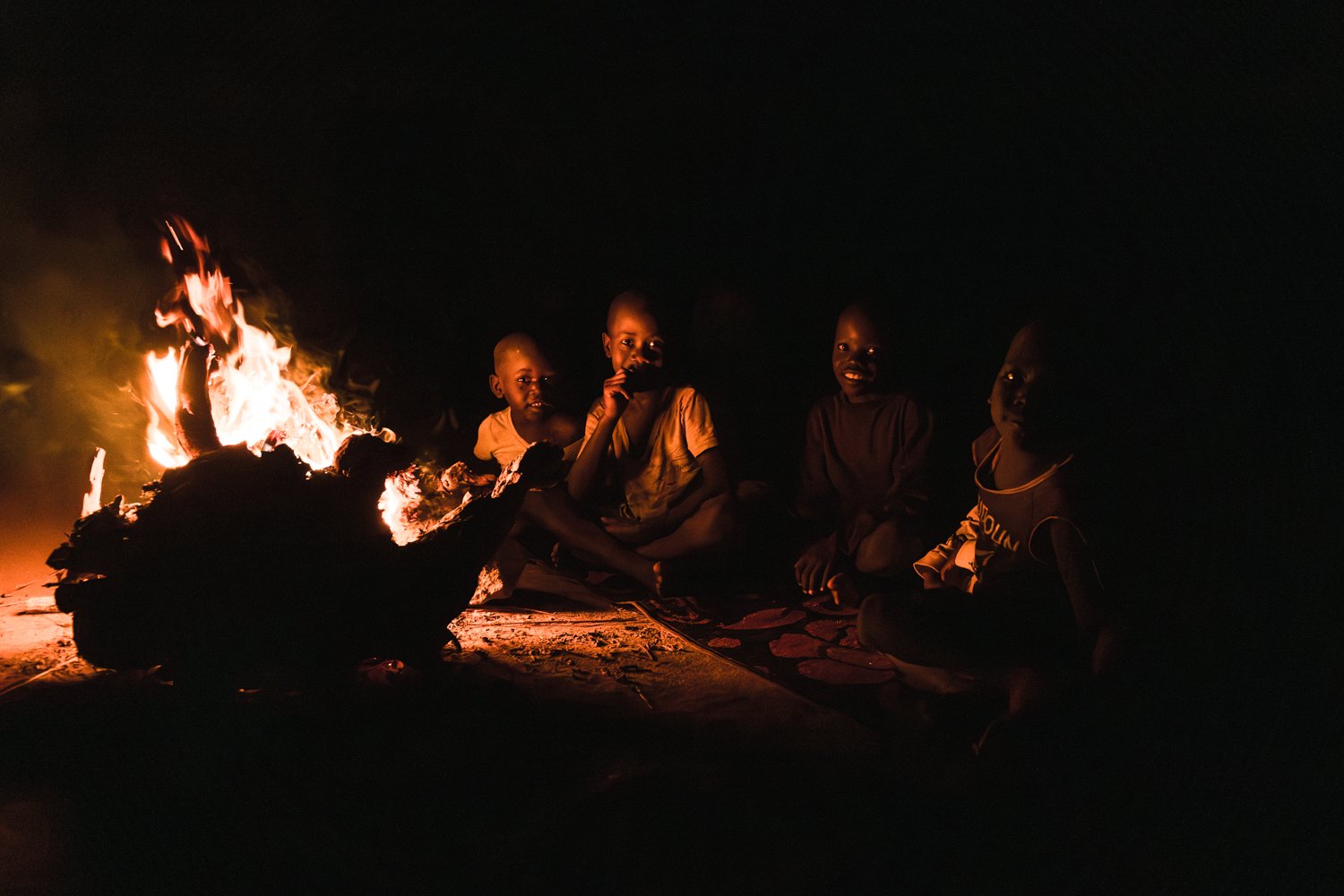Documenting Life in Northern Uganda
I am sleeping under mosquito netting on a real bed, much to my surprise, with my knife and cell phone by my head, though neither will do much good. I am staying in a small village near the Sudan border in Uganda which was the site of one of many refugee camps during the murders and violence of the Lord’s Resistance Army. On my evening walk around the community, the absence of men between the ages of 35 and 55 is marked; those generations were slaughtered by the terrorists who forcibly recruited child soldiers. My host’s daughter points out her mother’s land, as well as the location of the camp where she spent the majority of her childhood. Now the village market and a cell tower are located there. A large infirmary is located across the road and women draw water from a bore hole in the fading light. We stop at a small shop to pick up Jane’s cell phone which was charging there.
This area north of the Karuma River has stabilized since the LRA’s reign of terror from 1980s to the late 2000s. But Uganda can be unstable, armed security people are a constant reminder, at banks, hotels, and offices. It is at odds with the warmth and kindness of the people and the verdant landscape which bursts forth with food. And so trusting in the kindness of people versus the instability of a country, I decided to stay in a community to make photographs of life. And as I am particularly interested in women’s stories, a place where women have taken up roles that are traditionally held by men, such as farming with oxen calls to me. But I have been balancing risks and gains in my head all week leading up to this homestay, and it is my call. But in the end, I really want to photograph life over a period of time, not just drop in midday, and this is the best way.
Jane’s beautiful mother, Labol is well respected in the community, as a landowner and elder. It is her bed I sleep in although I tried to insist that I can happily take a papyrus mat on the floor. Their hut is beautiful, large with a polished concrete floor and a high thatched roof, much larger than I expected. Chairs surround a coffee table, and the home is divided by a light curtain, the living room on one side and bedroom on the other. I know she is affluent as she has a wooden bed with a mattress. The ledge on the outside of the hut is perfectly designed for sitting in the shade, or out of the rain, and watching life. I realize that the surrounding huts are less a village and more a compound for the family. The cooking hut, blackened by smoke, and two other huts for families who she allows to stay on and help.
This is my first home stay in equatorial Africa and I’m unsure what to expect. Because of the risks within the greater community, I brought the bare minimum. Jane insists that I bathe before bed. I am grateful for as I sweat through all my clothing in seconds in the intense heat, high humidity, and powerful sun of the region which sits on the equator. Coming from Boston’s winter to the African heat didn’t help my body’s ability to cope. And I wear pants to try to attract the minimal attention, or at least so as not to offend.
With minimal gear I’m unprepared. She generously lends me a kitenge (a traditional African print cloth which is multipurpose) and soap and brings a warm bucket of water to the outhouse, which has a nice private space. Gratefully I rinse off, expert at a bucket shower at this point, my hair can wait. The family keeps one of the long drop stalls in the outhouse locked, I cannot tell if this is always the case, or for me as a rare foreign guest, but it as clean as one can ask for. I head back to the hut in the blue hour, the kitenge around my chest feeling momentarily refreshed.
I won over Jane’s adorable son Reuben earlier showing him photos of himself on my camera, and a melted chocolate bar. (I always travel with emergency chocolate and coffee as they are endlessly useful.) He and his friends are no longer afraid of me, and so I sit with them on the bench around the hut watching twilight settle in. Other hut compounds circle out around us, separated by small farm plots, mango trees and scrub.
Jane and I eat a dinner of spaghetti, omelets, and lake fish inside the hut, by the light of a solar lantern. Her mother will not join although I ask. Jane speaks beautiful English relative to my pathetic attempts at the regional language of Acholi. I intentionally eat two helpings of the lavish spread, and tea, to be respectful of their hospitality, but throughout the weeks in Uganda and then Mozambique I find that my appetite is low. I think the intense heat and the heavy food don’t sit well in my stomach. I lean heavily into electrolytes and liters of (bottled) water. This is also essential to cope with the heat. Documentary photography is very physical, and in long pants in the African heat and sun, I sweat buckets daily. The first time I sweat through the seat of my clothing I’m embarrassed, then it just becomes normal.
After dinner I join the family gathering outside around a tree stump which Jane’s slightly tipsy uncle tells me is for a fire. She clarifies that they do this every night, and I cannot help thinking how much nicer this is than gathering around a television. The children scoot close to the stump and her uncle comes out of the cooking hut a flaming torch in his hand. In the darkness the light of torch then the fire illuminates the eyes of the young children by the fire, and I feel the tingle of the magic that comes with knowing I am seeing a beautiful photograph materialize before me. Every time this happened, I feel a quiet joy and deep gratitude that I get to be here in this special moment, that I can be a part of making this beauty. This magic is a big part of why I am a photographer.
When we first began our journey into northern Uganda, I was warned repeatedly that Ugandans do not like their photographs being taken, likely because of the fraught and violent political history of the country. But when I ventured out to the city market in Gulu, I was pleasantly surprised to find that when respectfully asked and shown photographs to prove I have no malintent, Ugandans are as warm, shy, open and approachable as most people I meet around the world.
Now in bed, I can see the sleeping shapes of Jane, Rueben, and Labol slightly visible through the curtain, illuminated by the flashlight they leave on all night. I’ve felt nothing but safe all this afternoon and evening, but I’m grateful for the light, however frail a comfort against my overactive mind. The metal door to the hut is locked, but the thatch is not exactly impenetrable. Nearby Sudan is in turmoil from war and famine, with refugee camps nearby, and not so far to the west border terrorists from the DRC make raids into Uganda from time to time. I feel good about my choice to come to the community, but I know it has risks, and I am eager for morning to come.
Roosters, the alarm clock of Africa, wake me from my light sleep as sunrise sneaks in below the thatch. I hop up, folding my borrowing kitenge, now sweaty, and bedclothes, and pull on my old clothing. Realizing I came unprepared and generously sharing, my hosts left toothpaste for me by the door, and I find Rueben sitting on the ledge of the hut in his adorable truck footie pajamas that I’d admired the night, before brushing his teeth.
Blearily, I grab my camera and set to work. Children in the hut across the way wash last night’s dishes in buckets. In the hut next door, I see a young boy get ready for school, closing the door of the hut behind him, hefting his backpack, and putting on his flip flops. These moments are so universal, they could be my nephews back home in Boston, but for the setting.
Along with the deep gratitude I feel for being allowed entry into the midst of people’s lives, and hopefully bringing viewers with me, I think this is the other thing I love the most about travel work. In scarier times, it can seem like people are so different that we have nothing in common. We have different languages, foods, homes, religions, skin colors, ways of dressing. We live in different climates, make our way in the world by different means, and have so many trappings that make our lives appear different, sometimes even in opposition. And the differences are what makes travel exciting.
But it is the similarities, among the differences, the innate humanness that we all share, that I find most thrilling. We are all more alike than we are different. We all want to stay safe, to care for our loved ones, to have food health and security, hope for the future, be a part of our community. We want to experience joy and love and laughter. Share small jokes, a meal, a moment. And seeing the inherent human aspects that we all share manifest in the small moments is a gift I do not take lightly. Whether it’s spending an evening gathered in family and friendship around a fire in northern Uganda, drinking and singing songs in the Gobi desert after morning of harvesting berries, gathering with women under a fragipani tree in Mozambique to share stories of the men and love, joining in a wake in an Irish pub although I did not know the deceased, or being warmly shepherded along by an auntie in Nepal, every time I experience these connection I am reminded that hope and love outweigh fear and hate.
The trappings may be very different-that is why we love to travel, but human emotions and experiences are universal, and this is why travel and really connecting with people when you do matters so much. And it is this this humanity that we all share that I hope to convey in my imagery. I am invited into these moments, but my aspiration as a photographer is that you as the viewer, will also feel that connection. That you see yourself in the moment, the familiar in the unfamiliar.














